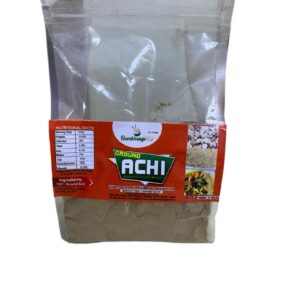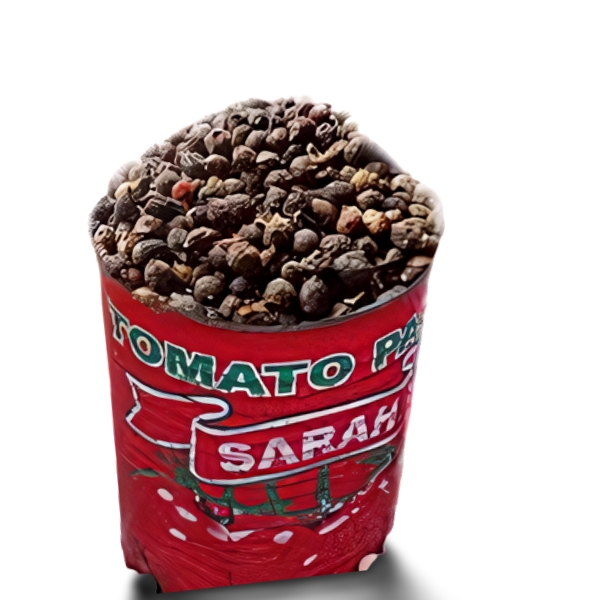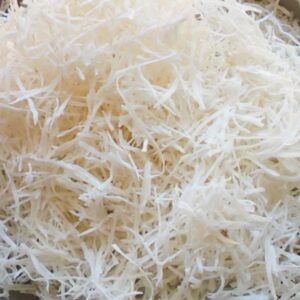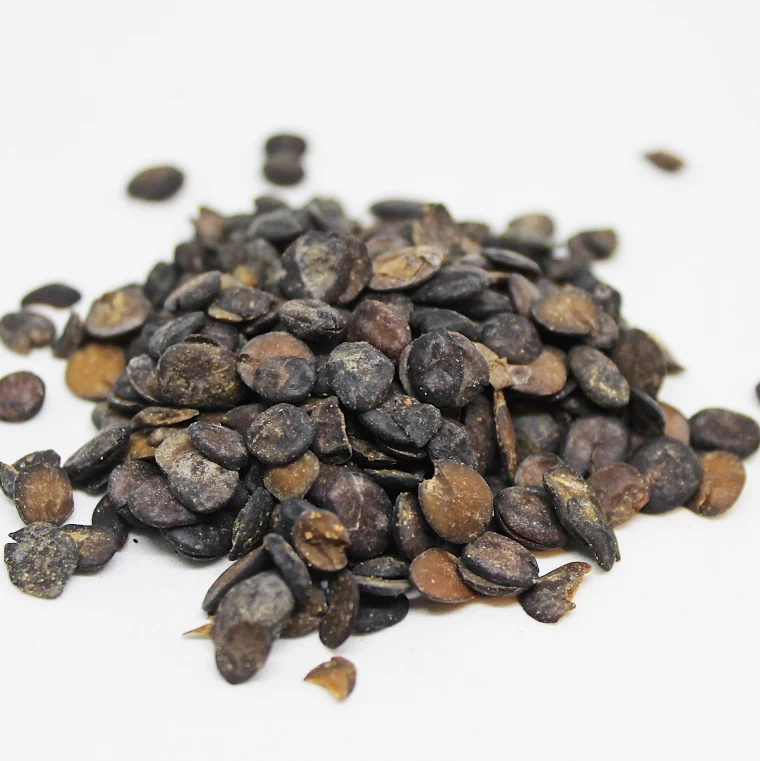

Description
Locust beans, known scientifically as Parkia biglobosa, are the seeds of the African locust bean tree, a leguminous plant native to Africa. Commonly referred to as “iru” or “ogiri” in Yoruba and “dawadawa” in Hausa, locust beans are a staple in West African cuisine. They are prized for their strong, pungent aroma and rich umami flavor, which enhance the taste of various traditional dishes.
Botanical Characteristics
- Scientific Name: Parkia biglobosa
- Common Names: Locust beans, Iru, Ogiri, Dawadawa
- Family: Fabaceae
- Native Region: Sub-Saharan Africa
Nutritional Profile
Locust beans are a nutrient-dense food, providing a wide range of essential nutrients and bioactive compounds:
- Calories: Moderate caloric content, suitable for energy
- Carbohydrates: Rich in carbohydrates, primarily fiber
- Protein: High in plant-based protein
- Fats: Contains healthy fats, including unsaturated fatty acids
- Vitamins: Rich in vitamins such as vitamin A, B-complex vitamins (thiamine, riboflavin, niacin), and vitamin C
- Minerals: High in essential minerals such as calcium, magnesium, potassium, iron, and zinc
- Phytochemicals: Contains antioxidants and other bioactive compounds with health-promoting properties
Health Benefits
- Digestive Health: The high fiber content in locust beans aids digestion, prevents constipation, and promotes a healthy gut.
- Protein Source: A valuable source of plant-based protein, important for muscle repair and growth.
- Heart Health: Contains healthy fats that help in reducing bad cholesterol levels, supporting cardiovascular health.
- Blood Pressure Regulation: Rich in potassium, which helps regulate blood pressure and maintain electrolyte balance.
- Immune Support: High in vitamins and antioxidants, which boost the immune system and protect against infections.
- Bone Health: Calcium and magnesium in locust beans contribute to strong bones and teeth, reducing the risk of osteoporosis.
- Antioxidant Properties: Antioxidants help neutralize free radicals, reducing oxidative stress and the risk of chronic diseases.
- Diabetes Management: Locust beans have a low glycemic index and can help manage blood sugar levels, making them beneficial for diabetics.
Culinary Uses
Locust beans are versatile and used in a variety of culinary applications in West African cuisine:
- Flavoring: Adds a rich, umami flavor to soups, stews, and sauces.
- Traditional Dishes: Essential in the preparation of dishes like egusi soup, ogbono soup, and jollof rice.
- Fermented Products: Used to make fermented locust bean condiments such as iru and ogiri, which are integral to many traditional recipes.
- Spice Blends: Incorporated into spice blends to enhance the depth and aroma of various dishes.
- Garnish: Sometimes used as a garnish to add a burst of flavor to completed dishes.
How to Use Locust Beans
- Preparation: Rinse the locust beans thoroughly to remove any dirt or debris. If using dried beans, soak them in water until they soften.
- Fermentation: For a more pungent flavor, locust beans can be fermented. This involves boiling the beans, fermenting them for several days, and then drying them.
- Cooking: Add the beans to soups, stews, or sauces early in the cooking process to allow their flavors to infuse into the dish.
- Garnishing: Use a small amount of locust beans as a garnish to enhance the flavor of traditional dishes.
Storage and Shelf Life
- Storage: Store dried locust beans in an airtight container in a cool, dry place. Fermented locust beans should be stored in a refrigerator to maintain their freshness.
- Shelf Life: Dried locust beans can last for several months when stored properly. Fermented locust beans should be consumed within a few weeks for the best flavor and quality.
Culinary Tips
- Flavor Balancing: Due to their strong aroma and flavor, use locust beans sparingly to avoid overpowering the dish.
- Complementary Ingredients: Pairs well with ingredients like meats, fish, other legumes, and leafy greens commonly used in West African cuisine.
- Texture Management: If the texture of whole locust beans is too coarse, they can be ground into a powder before adding to dishes.
Be the first to review “500g locust beans” Cancel reply
Related products
-
Sale!

100g of Achi soup thickner
₦2,500.00Original price was: ₦2,500.00.₦2,000.00Current price is: ₦2,000.00. Add to cart -
Sale!

half paint of date
₦8,000.00Original price was: ₦8,000.00.₦7,500.00Current price is: ₦7,500.00. Add to cart -
Sale!

500g Uziza seed
₦20,000.00Original price was: ₦20,000.00.₦17,500.00Current price is: ₦17,500.00. Add to cart -
Sale!

Abacha African salad
₦7,000.00Original price was: ₦7,000.00.₦6,000.00Current price is: ₦6,000.00. Add to cart


Reviews
There are no reviews yet.